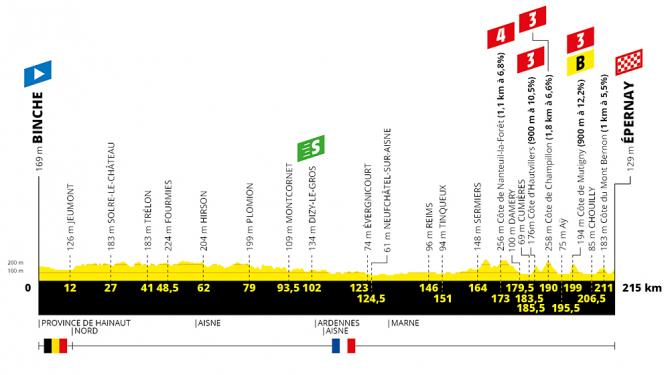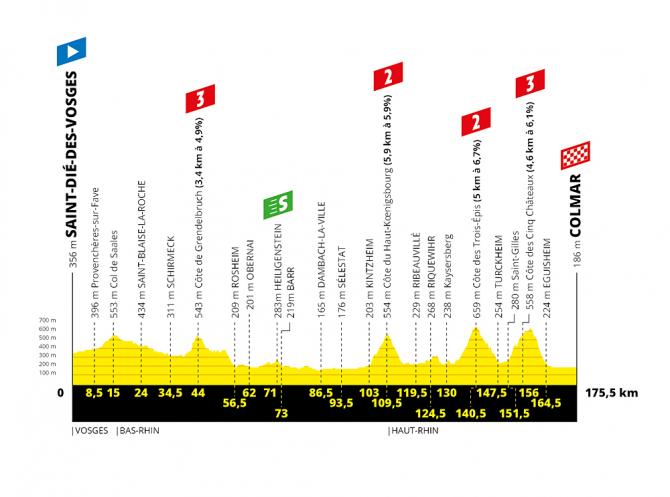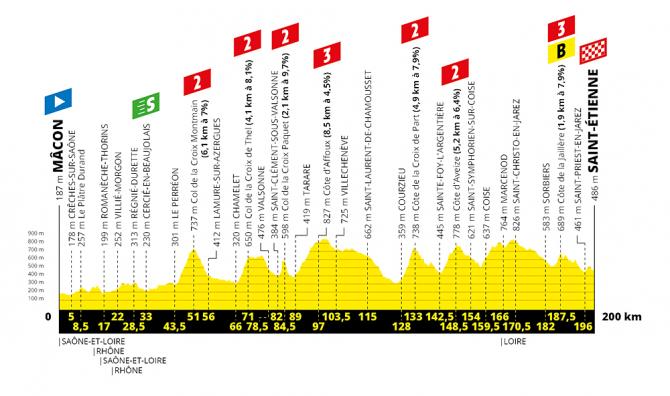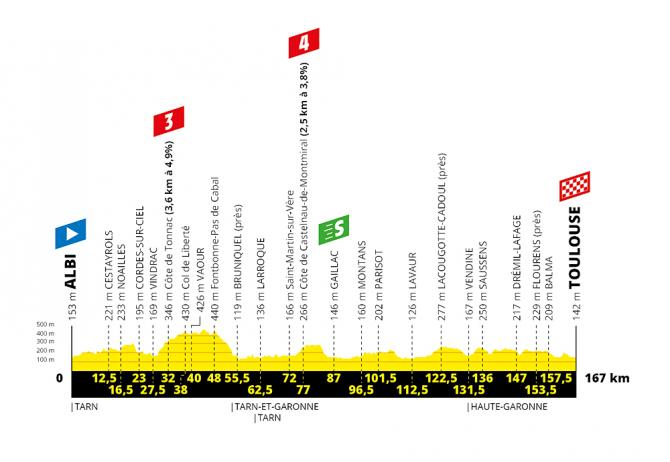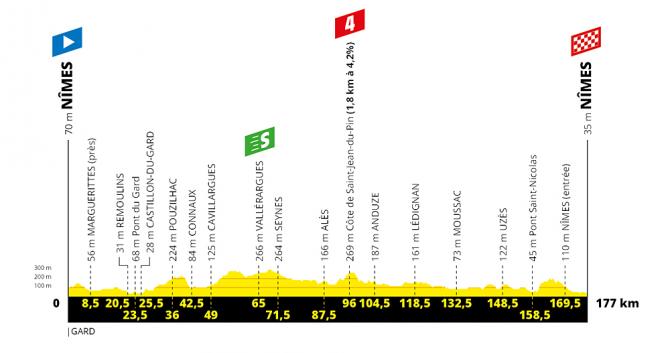Tour de France 2019: The ambush stages
A closer look at the below-the-radar stages that could shape this year's race
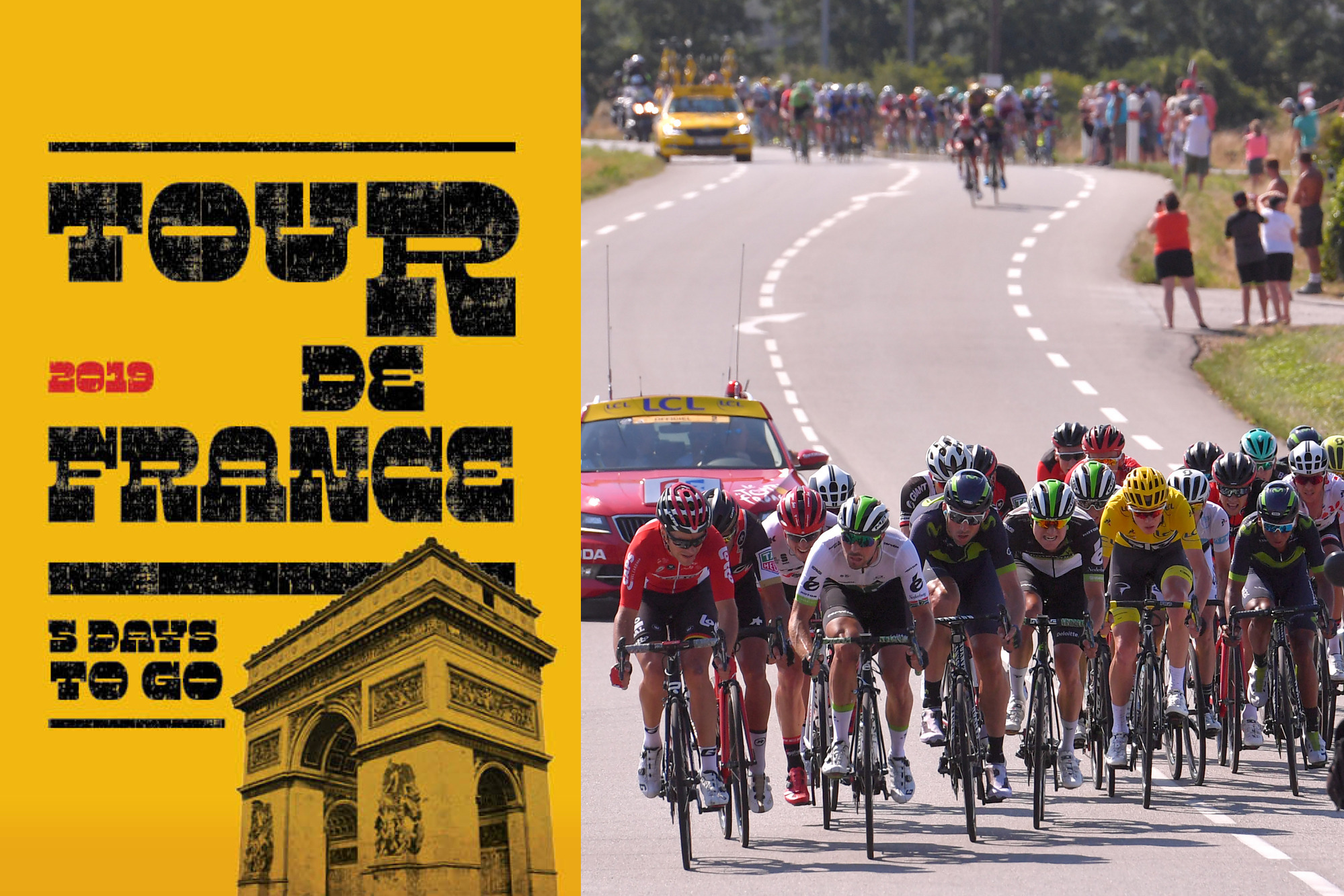
On any Tour de France route, there a number of stages that are clear-cut crucial days in the battle for the yellow jersey – summit finishes, for example, or individual time trials. However, the Tour de France, no matter how much of a pattern it has fallen into in recent years under Team Sky's control, always has the potential for surprise, and the race can be shaped at almost any point on any of the 21 stages.
The saying goes that there are points in the Tour where the race might be won, but could well be lost, and this year's route features much terrain that lives up to that old adage.
Away from the high-altitude climbs of the Pyrenees and Alps, we have rugged 'medium mountain' stages in France's lesser-known ranges, the Vosges and the Massif Central. Then there's the wind, which can single-handedly turn the flattest of stages into the most dramatic of spectacles. There are a couple of stages in the south in the second week that look particularly susceptible to echelons if the wind is blowing from the right direction at the right strength.
So while the yellow jersey hopefuls will have to be at their best on the high-mountain summit finishes, they'll have to be on high alert – and well supported – at almost every juncture of the race.
We've picked out five stages that don't necessarily appear to be pivotal GC days on paper, but which have the potential to see this year's Tour de France burst into life.
Stage 3 - July 8: Binche to Épernay, 215km
Every year, Tour boss Christian Prudhomme and the race director Thierry Gouvenou include a stage or two in northern or western France running across open country where the wind could be a significant factor. Generally, the weather is so benign in these regions in July that the potential sting is nullified, but once in a while the wind does have an impact. If it is blowing in the opening days of the race, this stage, which already has an intriguing finale, could be very complicated indeed.
Starting in Belgium, it quickly reaches France, rolling continuously for its opening half. Beyond the intermediate sprint, however, the peloton will race across flatter terrain towards the champagne capital of Reims, and it's here that a brisk westerly could wreak some initial havoc, which would likely continue beyond Reims as the race tackles a series of short, but sharp hills on narrow roads running into the finish in Épernay.
The latest race content, interviews, features, reviews and expert buying guides, direct to your inbox!
Among these, the Côte de Mutigny stands out because of its steepness and it being the first of the race's eight bonus points, where eight, five and two seconds will be awarded to the first three riders to cross it. This could well trigger an interesting battle with only a handful of seconds splitting riders fighting for the yellow jersey after the team time trial. The 15 per cent ramp up to the finish presents a final obstacle on a stage likely to spring a surprise or two.
Stage 5 - July 10: St Dié des Vosges to Colmar, 175.5km
With most of the sprinters likely to be dropped on the climbs on the run-in and the GC riders focusing more on the next day’s key rendezvous at La Planche des Belles Filles, this stage through the Vosges appears to be the first definite opportunity for a breakaway to stay away to the finish. Yet it's back-loaded with tricky five- and six-kilometre climbs as it skirts the edge of the Vosges massif heading into Colmar.
Although not tough enough to normally trouble a GC contender, racing up these narrow ascents in a large and probably very nervy bunch could result in some being caught out. For a team set on attacking and disrupting – Deceuninck-QuickStep, for example – the last quarter of this stage offers the perfect opportunity for an ambush when it crosses the Trois Épis and Cinq Châteaux climbs on the run-in to the finish.
Stage 8 - July 13: Mâcon to St Étienne, 200km
Christian Prudhomme and Thierry Gouvenou's attempt to shake up the established template and strategies for the Tour's opening week is best illustrated in this devilish stage through the incessant ups and downs of the Beaujolais hills to Saint-Étienne, which combined offer almost 4,000 metres of vertical gain. There are no fewer than seven categorised climbs, the last of them another bonus point designed to tempt the GC favourites onto the attack.
Will they bite? While strategic sense will demand that they preserve their resources for the Pyrenees and, above all, the 2,000-metre Alpine passes in the third week, this stage is a significant and quite complicated hurdle. The categorised climbs aren't long, but they're often tight and twisting with some abrupt ramps. In short, it's a stage where a large and still relatively fresh bunch is going to stretch and regroup repeatedly, making positioning crucial for any rider targeting a high overall finish.
As a consequence, the bunch will be very nervy, and there is an opportunity for someone, perhaps an outsider in the yellow jersey contest, to ruffle the principal yellow-jersey contenders – Julian Alaphilippe perhaps? This is one of a number of stages prior to the high mountains where it's easy to envisage the Frenchman with dynamite in his pedals blowing the sit-in-and-wait approach apart. Given his team's strength in the team time trial, Alaphilippe could even be in yellow by this point and determined to produce some fireworks with Bastille Day just 24 hours away. In doing so, he may well shake a contender or two out of the GC battle.
Stage 11 - July 17: Albi to Toulouse, 167km
This is a nailed-on sprint stage – short, just a couple of small climbs early on as it rolls through the Tarn, then a straightforward run-in to Toulouse where the green jersey contenders will make hay and the GC hopefuls will aim to stay out of trouble and save everything they can for the long first stage into the Pyrenees that follows. And yet…
Recent experience suggests that if there's one part of France where the wind is likely to blow at this time of year it's Occitanie, the region encompassing much of the south and south-west of the country. In this area, that wind is typically a tramontane, coming from the north-west, picking up strength as it gets squeezed between the Pyrenees and the Massif Central.
If it's gusting, it will be coming from three or four o'clock as the riders head south from Gaillac into very open terrain. With 35km remaining, the road will turn west and more directly into the wind. There are regular changes of direction in this closing section, and some teams may be canny and quick enough to take advantage, with Team Ineos among those with history in this respect. What's more, the sprinters' teams may be complicit if they see the chance to distance one or two key rivals who are out of position.
With opportunities so rare for the sprinters in this race, there will be a bunch finish, but how big will that bunch be?
Stage 16 - July 23: Nîmes to Nîmes, 200km
With just one climb and barely any significant elevation gain of note, this stage in and out of the Roman city of Nîmes looks one of the least complicated of the whole race. Yet, think back to the start of stage 14 of the 2018 edition in Saint-Paul-Trois-Châteaux, about 80 kilometres further up the Rhône valley. The Mistral was gusting viciously from the north, and in the opening few minutes of the stage the bunch split into echelons. While this early bout of frenetic action didn't ultimately have any significant impact on how that stage to Mende unfolded, it did give an indication of the potential for chaos on this circular route if the Mistral turns up at the show again.
It could cause the bunch to split at any point on this huge loop around the department of Gard, but the danger is particularly acute when the route turns to the west at Connaux and then, later on, when it switches to an easterly trajectory between Anduze and Uzès. Although the rest day 24 hours earlier will have offered weary riders the chance to recuperate a little, many will be flagging at this point in the race, increasing the likelihood that splits will occur in the peloton.
As this is the last opportunity for a bunch sprint until the race reaches Paris, the sprinters' teams will be under instructions to keep the breakaway well within range and on the look-out for opportunities to ambush any rivals. The GC contenders will be equally attentive.
If it's calm, this could be one of the race's least interesting stages, standing out mainly for the beautiful surroundings. But if the Mistral blows, it could be as gripping as the very best day in the mountains.
Peter Cossins has written about professional cycling since 1993 and is a contributing editor to Procycling. He is the author of The Monuments: The Grit and the Glory of Cycling's Greatest One-Day Races (Bloomsbury, March 2014) and has translated Christophe Bassons' autobiography, A Clean Break (Bloomsbury, July 2014).
